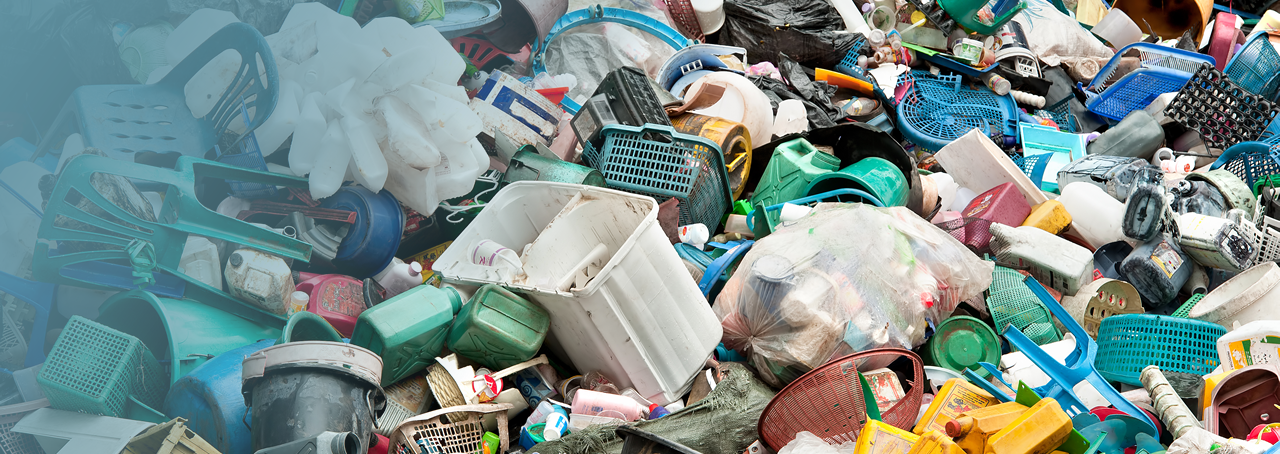TAF Impact: Targeting an Environmental Threat
Our planet is choking on plastic, according to the UN Environment Programme. Plastic alters habitats, interferes with ecosystems’ ability to adapt to climate change, and enters the food chain, where it damages the health of wildlife and humans. Once discarded, it can remain in the environment for up to 500 years.
Numerous organizations report that there’s currently too much plastic to get rid of: the only solution is to change how we produce, consume, and dispose of it. Now, the Technology Accelerator Fund has invested in a technology that produces a fully biodegradable bioplastic made by bacteria from agro-industrial waste. Developed by Dr. Christopher Thomas, Dr. Ryan Scheel and Dr. Bandaru Ramarao, professor and chair of chemical engineering at SUNY ESF, the bioplastic may replace traditional plastic while reducing waste around the world.
“We are excited that our product will impact how people do things in the future,” says Dr. Ramarao.
A Revolutionary Twist on an Old Idea
Using bacteria to generate bioplastic isn’t new. Polyhydroxyalkanoates (PHAs) were discovered in 1925 and later developed commercially, but the product had limited properties. The team has fine-tuned the way the bacteria produce the bioplastic, giving them control over such factors as flexibility, transparency, and thickness.
“We are able to produce targeted, novel, and unique bioplastics to suit the needs of a wide range of customers. The TAF award has positioned us to create products from a fully biodegradable single-use coffee cup to the small clear window in a box of pasta,” says Dr. Ramarao.
TAF: More Than a Financial Award
In addition to money, the TAF award included a market assessment that identified potential customers, investors, and partners. Christopher Thomas, a postdoctoral researcher at ESF, received a PhD in biochemical engineering with Ramarao as his advisor. Thomas founded the startup Retrn to manufacture the TAF-funded technology, using the TAF market assessment as his bedrock. “The chance to work with folks who independently evaluated our technology and confirmed that what we're doing is unique, that our intended market is the right market, and even alluded to some partners in and of itself made engaging with TAF valuable,” says Thomas.
Retrn is partnering with paper manufacturers to produce a prototype single-use, fully biodegradable coffee cup. The partners have given Retrn specific metrics on the qualities they want the end product to have and the manufacturing processes they require to make it. In turn, Thomas and Ramarao will use the TAF funds to buy equipment, materials, supplies, and labor to produce a prototype.
Enlarging the Circular Economy
Inger Andersen, executive director of the UN Environment Programme, says, “We will not recycle our way out of the plastic pollution crisis: we need a systemic transformation to achieve the transition to a circular economy.”
In a circular economy, new products are manufactured reusing old materials, leading to environmentally sustainable production. The technology invented by this team harnesses the elegance of the circular economy: It uses waste products generated by the paper manufacturing industry to feed the bacteria that make the bioplastic.
The waste product in question is called fines. Paper manufacturers hate fines because they reduce the quality of the recycled paper and slow down the manufacturing process. The team’s process turns the fines into sugar for the bacteria, making it a win-win situation for all involved. “Fines are a huge headache for paper makers. We tell them, ‘You pay sixty dollars a ton to throw the fines out. Sell them to us, and we’ll use them to make our targeted bioplastic.’ The beauty is you take the bioplastic and put it back on the recycled paper, so the paper manufacturers have an interest in keeping this thing going round and round,” says Ramarao.
Wave of the Future
Thomas spoke to a lot of people before founding Retrn, including PepsiCo’s director of R&D. This industry expert believes that PHAs are the wave of the future, as long as they have two features: they’re made out of waste, and they can target the specifications of different customers. “He told us, ‘If you have either of those things, call us, because that's what we're looking for right now.’ Well, we have both,” says Thomas.
For the meantime, Thomas and Ramarao will hone their technology to get established in the field of paper packaging. This will give them room to work on the next iteration of their technology, perhaps deploying it into the more stringent medical field.
Ultimately, their hope is to completely replace petroleum-based plastics around the world. Says Thomas, “We need new technologies to change what we're doing right now, and we're going to help the paper industry do that. Our whole thing is introducing the fundamental changes we need to see so that we're not drowning in microplastics and plastic pollution in 2050. This is our real goal, and this could honestly be the solution. So huge thanks to TAF for helping kick this off.”
comments powered by Disqus


